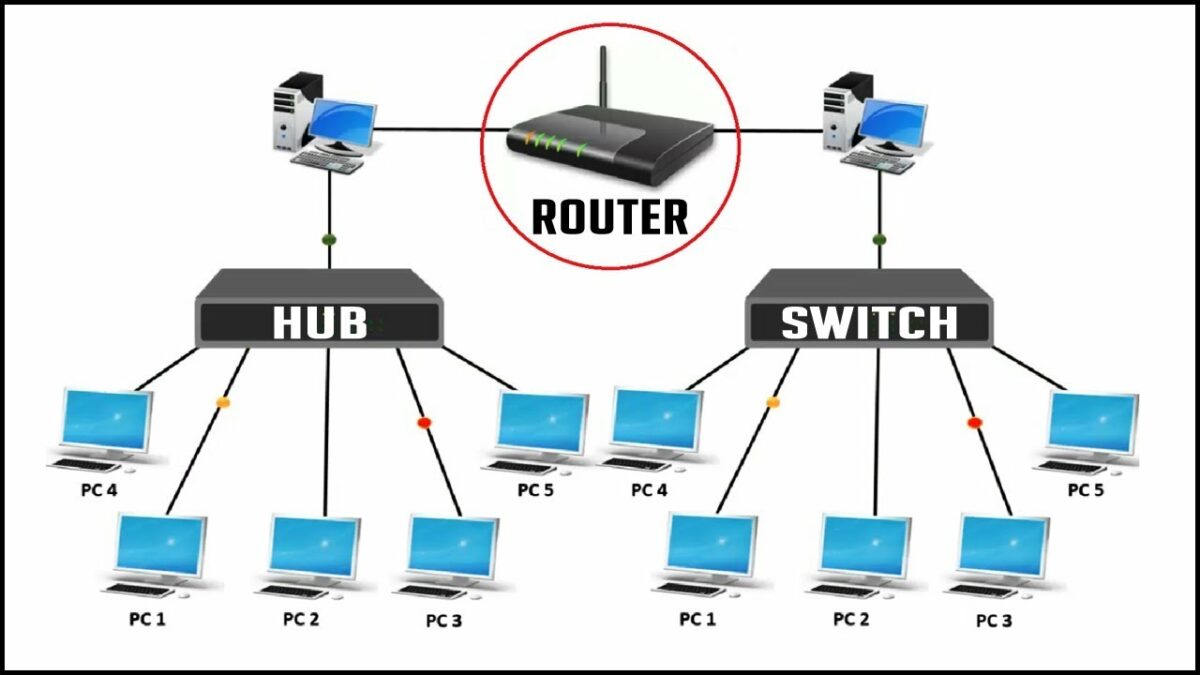In computer networking, hubs and switches are two common devices used to connect multiple devices within a local area network (LAN). While they may appear similar in function, they are fundamentally different in their operation and features. Here we’ll explore the key differences between a hub and a switch.
What is a Hub?
A hub is the simplest and most basic networking device that enables the connection of multiple devices to a network. It is essentially a central communication point that receives incoming data packets and distributes them to all connected devices without any filtering or decision-making. Hubs operate solely at the physical layer in the OSI model and do not provide any intelligent management or prioritization of network traffic. Due to this, data collisions are common when multiple devices on the same hub try to transmit at the same time, leading to slower network performance.
What is a Switch?
A switch, on the other hand, is a more advanced device that operates at the data-link layer in the OSI model. It actively manages and learns the MAC (Media Access Control) addresses of all connected devices and significantly reduces collisions by selectively forwarding data only to the intended recipient device. Switches also provide greater bandwidth utilization and faster network speeds than hubs as they can reliably handle multiple devices transmitting data simultaneously. Switches also have more advanced features such as VLAN tagging, QoS (Quality of Service) prioritization, and SNMP (Simple Network Management Protocol) management capabilities which makes them more flexible and scalable for larger networks.
Key Differences:
– Hubs send incoming data packets to all connected devices, while switches selectively forward data only to the intended recipient device.
– Hubs operate solely at the physical layer, whereas switches operate at the data-link layer in the OSI model.
– Hubs do not provide intelligent traffic management or prioritization, while switches have advanced features such as VLAN tagging, QoS prioritization, and SNMP management capabilities.
– Hubs commonly result in data collisions and slower network performance, while switches enable faster network speeds and greater bandwidth utilization.
– Hubs are cheaper and simpler to set up, but switches are more expensive and offer better performance and flexibility for larger networks.
In conclusion, while hubs and switches both serve the basic function of connecting multiple devices to a network, the key differences in their operation, features, and performance make switches the preferred choice for most modern networks. For small and simple networks, a hub may suffice, but for larger and more complex networks, a switch is the way to go.
Table difference between a hub and a switch
| Parameter | Hub | Switch |
|---|---|---|
| Functionality | Works on physical layer to connect devices and broadcasts data to all connected devices. | Works on data link layer and allows devices to communicate directly with each other. |
| Collision Domain | Single collision domain is shared by all connected devices. | Creates a separate collision domain for each port. |
| Bandwidth | Bandwidth is shared by all connected devices. | Provides dedicated bandwidth to each connected device. |
| Speed | Can only support up to 10 Mbps or 100Mbps. | Can support higher speeds such as 1Gbps or 10Gbps. |
| Cost | Less expensive than a switch. | More expensive than a hub. |


